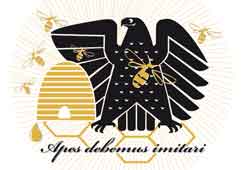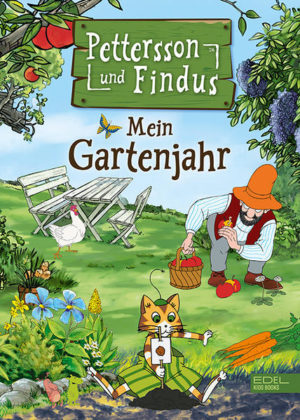- Softcover: 170 Seiten
- Verlag: Bundesforschungsinstitut für Kulturpflanzen (JKI)
- Autor: Tofel Haman Katamssadan
- Auflage: 1. Aufl., erschienen am 26.04.2016
- ISBN-10: 3-95547-033-4
- ISBN-13: 978-3-95547-033-3
- Größe und/oder Gewicht: 21,0 x 14,0 cm
Insecticidal products from local Azadirachta indica A. Juss and Plectranthus glandulosus Hook for the protection of stored grains against the infestation of Callosobruchus maculatus F. and Sitophilus zeamais Motschulsky
12,95 €

Über „Insecticidal products from local Azadirachta indica A. Juss and Plectranthus glandulosus Hook for the protection of stored grains against the infestation of Callosobruchus maculatus F. and Sitophilus zeamais Motschulsky“
Das vorliegende Sachbuch zu Themen aus Umwelt und Natur „Insecticidal products from local Azadirachta indica A. Juss and Plectranthus glandulosus Hook for the protection of stored grains against the infestation of Callosobruchus maculatus F. and Sitophilus zeamais Motschulsky“ wurde erarbeitet und verfasst von Tofel Haman Katamssadan. Dieses Sachbuch erschien am 26.04.2016 und wurde herausgegeben von Bundesforschungsinstitut für Kulturpflanzen (JKI).
Bücher wie „Insecticidal products from local Azadirachta indica A. Juss and Plectranthus glandulosus Hook for the protection of stored grains against the infestation of Callosobruchus maculatus F. and Sitophilus zeamais Motschulsky“ sind im Onlineshop des Honighäuschens bestellbar. Online bestellte Fachbücher zur Imkerei und zu anderen Themen der Umwelt und des Artenschutzes sind zu den üblichen Öffnungszeiten auch direkt im Buchladen Bundesamt für magische Wesen in Bonn, der Stauhauptstadt von Nordrhein-Westfalen abholbar und werden auf Wunsch verschickt.
Das Thema Bienensterben, Rückgang von Insekten und allgemeines Artensterben ist in aller Munde und das Honighäuschen als frühere Bioland Imkerei hat sich von Anfang an daran beteiligt. Mehr als 35 Jahre Imkereierfahrung nahmen ihren Anfang 1982 mit den ersten eigenen Bienen.

Der zehnjährige Junge, der 1977 einem Hamburger Imker über die Schulter schaute; der Fünfzehnjährige, der mit der Imkerei in Zeiten begann, in denen es noch keine Varroamilbe gab; der achtzehnjährige Fahrschüler, der lernte, dass man die Windschutzsscheibe seines Autos nach einer längeren Fahrt von Insekten säubern muß; der zwanzigjährige Student, der für seine Bienen einen Platz in Bonn suchte; der dreißigjährige Berufsimker, der seinen Bienen quasi eine Gutenachtgeschichte erzählte und sich den Kopf zerbrach, wie man die Umwelt mit ihren Bienen, Wespen, Schmetterlingen und andere blütenbesuchenden Insekten vor den Machenschaften der Agrargiftindustrie und der Gleichgültigkeit agrarindustriehöriger Politiker schützt; der Imker, der nicht nur auf dem Weihnachtsmarkt Bonn die Öffentlichkeit suchte, um bei Führungen an den Bienen auf dem Dach der Bundeskunsthalle zu erleben, dass Kinder (und deren Helikoptermuttis!) Angst vor Schmetterlingen hatten, bis hin zum Begleiter von Forschungsprojekten zu den Riesenhonigbienen Nepals oder den Killerbienen Afrikas, stellt fest, dass etwas sehr im Argen liegt in unserem Umgang mit der Umwelt.
Es sollte jedem bewußt sein, dass die Haltung „Natur ja, aber bitte woanders!“ nicht in Ordnung ist.
Die wunderschöne Welt der Natur

Jeder Griff zum Unkrautvernichtungsmittel, um den Rasen „schön ordentlich“ zu halten, bevor „die Nachbarn was sagen“; jeder überflüssige Einsatz zur Bekämpfung eines Wespennestes – ja, auch damit habe ich zu tun und berate gern, wenn ein Hornissennest oder ein Wespennest in Bonn den Haus- und Gartenbesitzer vor Fragen stellt, sollte begleitet sein von der Frage, ob das wirklich sein muß.
In unserem Online-Buchshop finden Sie viele Bücher wie „Insecticidal products from local Azadirachta indica A. Juss and Plectranthus glandulosus Hook for the protection of stored grains against the infestation of Callosobruchus maculatus F. and Sitophilus zeamais Motschulsky“, die Ihnen die fantastische Welt der Bienen, Wespen, Ameisen, Hornissen und Schmetterlinge sowie anderer Insekten näherbringen.
Aber nach wie vor stehe ich Ihnen auch gern zu einem Gespräch oder zu einer Beratung im Umgang mit Bienen, Wespen, Hornisse, Wildbienen und Hummeln zur Verfügung, wenn Sie Fragen haben. Besuchen Sie uns in Bonn im Bundesamt für magische Wesen.
Und natürlich gibt es auch weiterhin Honig, Bienenwachskerzen und Met bei uns und zwar das ganze Jahr – nicht nur zu Weihnachten.
| Gewicht | 200 g |
|---|---|
| Größe | 21 × 14 cm |








Bewertungen
Es gibt noch keine Rezensionen